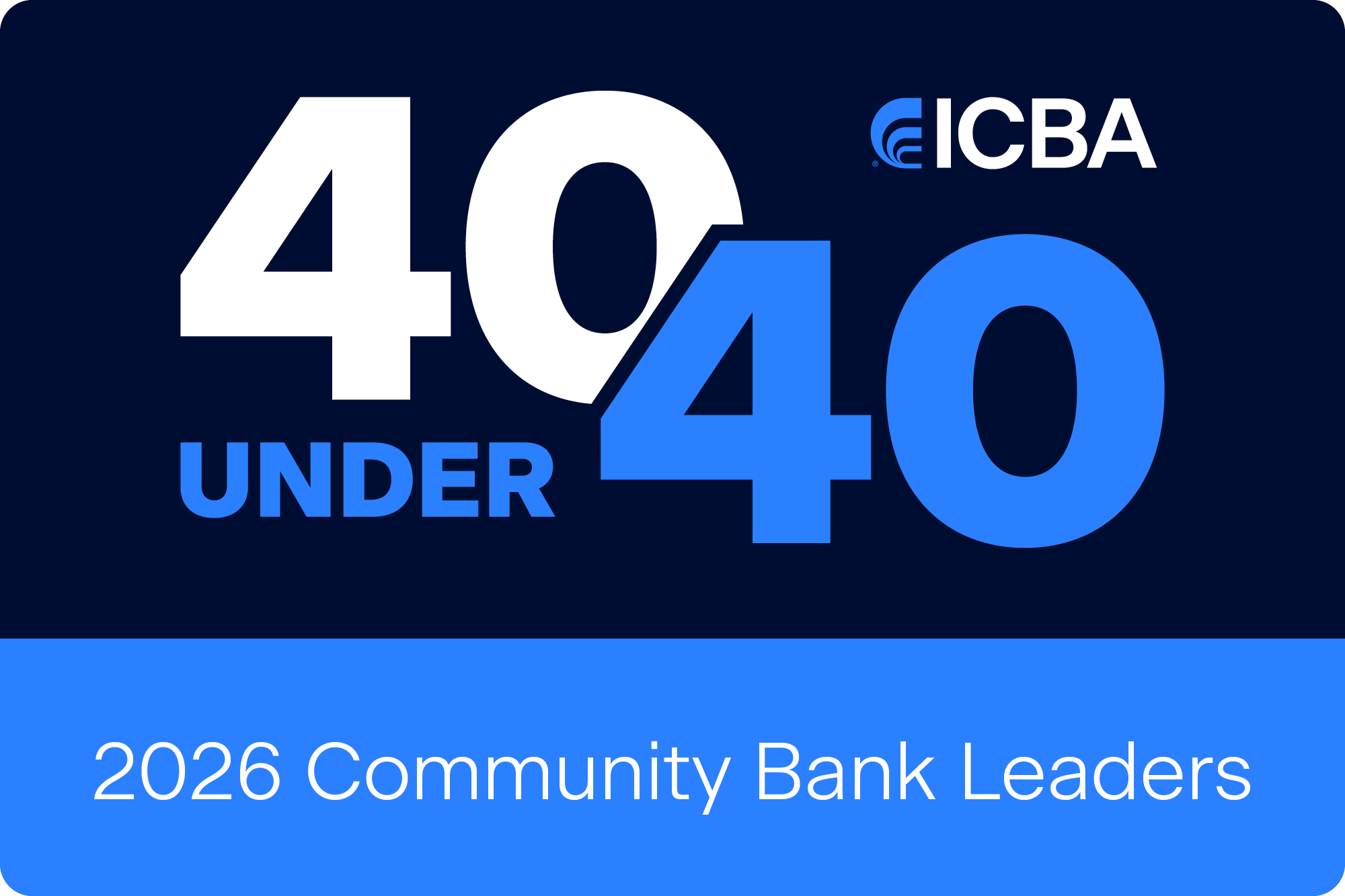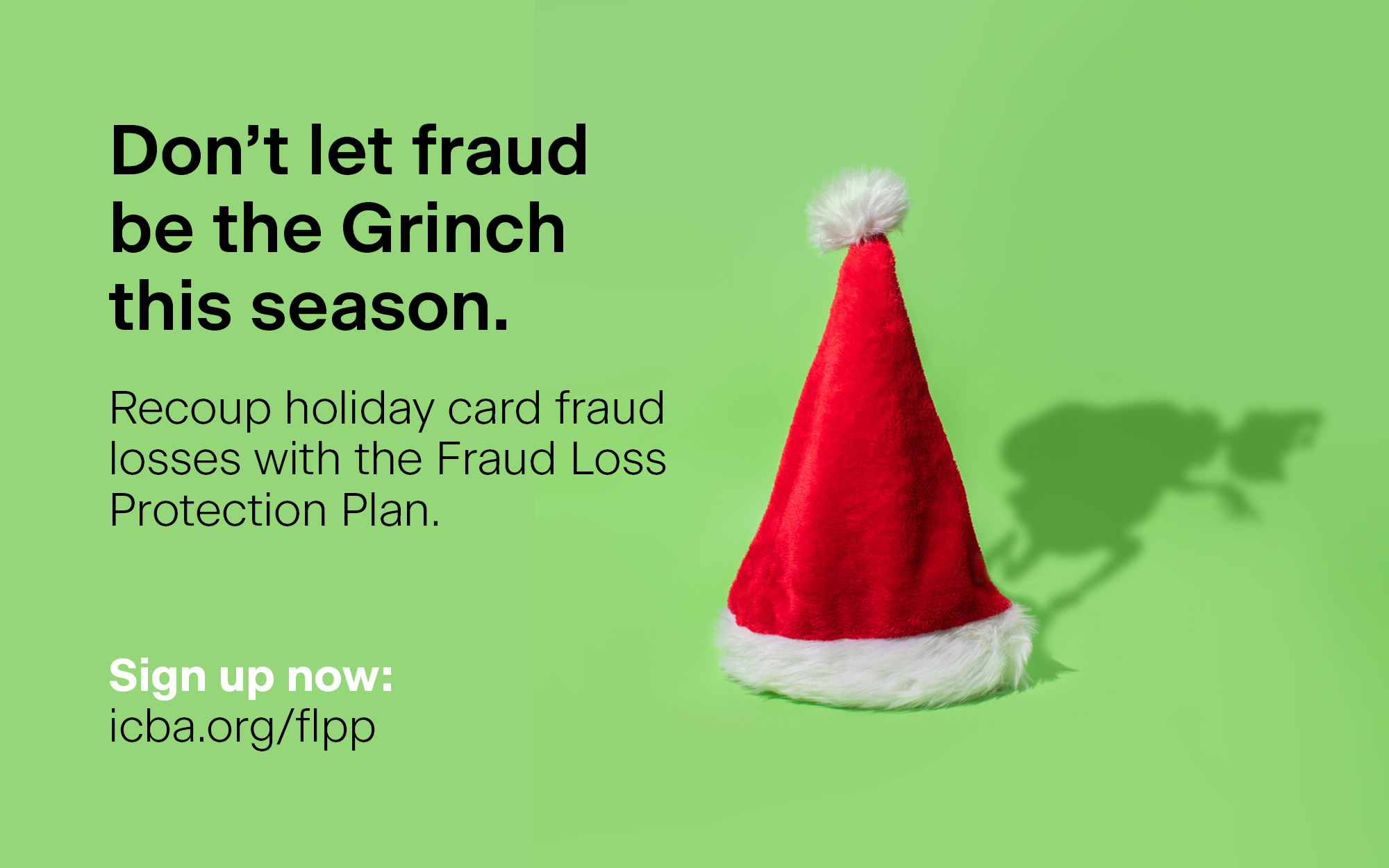Trustworthiness is integral to the success of a bank. And for community banks, it’s more than table stakes—it’s your competitive edge. We asked community bankers and others how they build and maintain trust in an ever more digital world.
What Makes Customers Trust Community Banks?
April 01, 2025 / By Beth Mattson-Teig
Trustworthiness is integral to the success of a bank. And for community banks, it’s more than table stakes—it’s your competitive edge. We asked community bankers and others how they build and maintain trust in an ever more digital world.
On the surface, building trust seems straightforward, especially for community banks with relationship-based business models and that have a long history serving their local communities.
But in an increasingly digital world, building and maintaining trusted relationships is more complex. Technology, consumer expectations and the way people interact with their financial institutions are all changing, prompting banks to change with the times.
How to connect with a digital customer
For many community banks, building trust starts with a core foundation of personal relationships. Yet, that simple step is far more challenging in an era where customers are making fewer in-person visits to bank branches.
“The foundation for us in building trust is still the way we’ve been doing it for 140 years in terms of building relationships, supporting the community and supporting our employees, who are our ambassadors in the community,” says Brian Canina, president and COO of $4.4 billion-asset PeoplesBank in Holyoke, Mass.
Quick Stat
69%
of consumers rank good fraud protection as one of their top considerations when choosing a financial service provider.
Source: FICO
In today’s digital era, building personal connections requires more outreach, including stepping outside the bank to volunteer at and participate in community events.
“Just the presence alone, and knowing that your bank is right there and supporting your community, is a good way for those customers who don’t come into a branch to feel our presence in the community and build that relationship,” says Canina.
Community banks have a long history of supporting their communities through volunteerism, sponsoring local groups and events and philanthropy. For example, Meridian Bank in Malvern, Pa., donates $400,000 to $500,000 each year to local nonprofits as part of a tax credit program available through the state of Pennsylvania. That initiative allows the $2.5 billion-asset community bank to directly support local organizations that are doing good work.
“That’s really helped us build trust and credibility, because our customers know that we’re not just here for the dollars and cents,” says Chris Annas, Meridian’s chairman and CEO. “They also know that we’re helping to build the economics of the area with both the companies and the organizations that make this area better.”
Outreach needs to encompass all channels, including connecting with customers online via websites, email, mobile apps and social media. Examples range from providing educational resources for financial literacy to hosting seminars for first-time homebuyers.
“We focus on making sure we’re constantly changing with the times and with technology, and in reaching our customers through all the channels in which they could be seeing us in the market,” says Canina.
“The tried-and-true approach of going to meet with the customer, sitting down, asking great questions, listening to them and providing relevant solutions—that’s still a great way to go [for building trust].”—Travis C. Rouse, M&F Bank
Secure finances, secure trust
The increasing prevalence of fraud makes it all the more important for the financial services industry to build and keep customer trust. According to a recent FICO report, 69% of consumers rank good fraud protection as one of their top considerations when choosing a financial service provider.
Financial security is a foundational way for community banks to create trust, notes Andrew Gowasack, president of Trust Stamp, a provider of AI-powered technologies that serves the banking and financial services industry. “Customers assume you have the correct protocols in place to protect them, and if they start getting a feeling that those protections aren’t in place, they will look elsewhere,” he says.
Community banks are tasked with being vigilant against fraud directed at customers and the bank itself. Synthetic identity fraud—where criminals can use stolen information to invent fictitious people and then use those identities to apply for financial accounts—is just one type of fraud on the rise. At financial institutions, it’s estimated that 95% of synthetic identities are not detected during the onboarding process, according to Thompson Reuters.
“Trust is not a one-way street; it’s a two-way street,” says Jill Sung, president of $350 million-asset Abacus Federal Savings Bank in New York City. “It’s not just about the customer trusting the bank. The bank has to trust the customer.”
Community banks need to answer two key questions: Who are you, and can I trust you?
“Those should be easy questions to answer,” says Gowasack, “but they’re not, largely because of the number of data breaches that have occurred that have made personally identifiable information widely available to fraudsters and other bad actors.”
Providing extra layers of security, such as with biometric data or two-factor identification, creates added protection for both the customer and the financial institution. However, any new safeguards, whether it is a new tool or process, also need to be paired with good communication and education.
If banks put a new technology or product in front of a customer without sufficient explanation, odds are that it will fall flat, notes Gowasack. “You have to provide sufficient explanation, and it has to make sense for the customer,” he says.
Trust is not one-size-fits-all
Community banks recognize that best practices for building trust are not the same for everyone.
“The tried-and-true approach of going to meet with the customer, sitting down, asking great questions, listening to them and providing relevant solutions—that’s still a great way to go,” says Travis C. Rouse, senior vice president and chief sales and lending officer at $495 million-asset M&F Bank in Durham, N.C.
But Rouse acknowledges that the traditional approach doesn’t resonate with everyone these days. For some customers, trust comes from the products and services a bank offers, how a bank implements those products and services, and its ability to provide up-to-date technology, convenience and ease of doing business.
Banks also recognize that people are inherently different. For example, younger customers often have higher expectations for technology. They want things to happen fast and to be able to easily transact from their phones. If that technology doesn’t work, that trust and that customer relationship is at risk. “They’re not going to have confidence that you can deliver what they need to be their bank,” says Rouse.
According to a survey of 10,000 U.S. consumers conducted by experience management software firm Qualtrics, only half of consumers said they had confidence in the brands they do business with. Trust is lowest among Gen Z consumers with 28% and highest among baby boomers at 57%.
Abacus Federal’s primary customers are first- and second-generation Chinese immigrants, with branches in New York City, Philadelphia and Edison, N.J.
“Our population already comes from a place of not trusting, so you have to be very careful about what you do,” says Sung. “If you do something wrong, it’s very hard to rebuild that trust.”
Another big challenge for Abacus Federal is building trust with younger generations. When the older generation of Chinese immigrants first came to the U.S., they chose a bank that spoke their language and understood and honored their traditions and culture. The subsequent generations may not want the same things; they might put more value in things like convenience and speed to withdraw money or apply for a loan.
Building relationships and trust across generations goes back to the basics of truly understanding the customer and their needs, adds Sung. “What’s important in our community is that you’re consistent and you deliver what you say you’re going to deliver,” she says.
6 tips for building trust
Start with a good foundation. Provide great customer service, keep your promises and try to make banking easy and frictionless for customers.
Prioritize security and data privacy. Review security and data privacy protocols regularly, and train staff on good security practices and how to watch out for cases of fraud. “There’s never a scenario where you can say, ‘We beat the bad guys, and they’re never coming back.’ They will always come back, and they will always try something new,” says Andrew Gowasack, president of Trust Stamp. “So, you have to visit it regularly.”
Keep customers informed. You may be doing all sorts of behind-the-scenes things to keep bank and customer data safe, but that does nothing to instill trust unless you tell customers about it. Consider a regular email that keeps customers up to date on both emerging threats, how they can protect themselves, and what you are doing to protect their finances.
Give staff the answers. It’s important that employees not only know the banking regs and best practices for protecting customers; they also need to know how to respond to customer questions, giving them good information and guidance.
Consistency matters. One of the most effective ways to build confidence and trust is through consistency. That consistency is important across areas ranging from the customer service you provide to maintaining a stable base of employees.
Be proactive. People, technology and culture are never static. Banks should always be evaluating traditional and new methods of building trust.
Filling the role of trusted advisor
What sets community banks apart from some of their larger competitors is the guidance they provide to customers. That is especially true for lenders who work with customers making big financial decisions, such as buying their first home, expanding their business or financing equipment for the family farm.
For lenders, says Annas, “reputation is everything” in building trusted relationships. That reputation is built on a variety of factors, including the knowledge and experience needed to help find the best solutions for customers. Often, good guidance is more valuable than delivering the lowest rate on a loan.
“What’s more important for us when we’re in front of somebody who’s looking to build a real estate project or borrow money for a new line in their factory is to be able to tell them, ‘I’ve seen this before, and here’s what this guy did to make it successful, and here’s the way we’ll structure your loan,’” says Annas.
Annas says the best advice for a business may be to structure a loan for an expansion as interest-only for two or three years, until they get on their feet and start paying down principal. “We spend a lot of time on that, and our lenders are really relied upon as unpaid professional advisors,” he says.
Cultivating experience starts with hiring good people and providing frequent training. For example, Meridian Bank started its own internal training program for lenders several years ago that includes sending its lenders to association-sponsored education and training, as well as having them work with attorneys to understand risk management and how to put documents together. It also invites all its lenders, especially the junior lenders, to attend its loan committee meetings, where loans are presented for approval.
When a complicated credit is presented, Annas says, attendance allows junior lenders to hear all the points that the experienced lenders are making. It also helps them to learn where the guardrails are: Where there is some flexibility in making a loan, and where there isn’t. Training, he says, gives lenders the confidence to get in front of a customer in the field and be able to offer solutions that will work or, in some cases, to be able to tell them quickly what won’t work and why.
The most trusted subsector in financial services
Despite big hurdles in recent years ranging from COVID shutdowns to negative headlines surrounding bank failures and financial fraud, banking has emerged as the most trusted subsector of the U.S. financial services industry.
According to the global 2024 Edelman Trust Barometer survey, 61% of U.S. consumers said they trusted banks in 2024. This represents a drop of two points from the previous year, but banks’ reputation fared better than financial services overall, which were trusted by 55% of U.S. consumers—also a drop of two points.
Which financial services subsectors Do Customers Trust most? According to the 2024 Edelman Trust Barometer
The frontrunners of trusted customer relationships
Quick Stat
61%
of surveyed consumers say they trust banks—the highest‑rated subsector within financial services
Source: Edelman Trust Barometer
Businesses across industries recognize that trust is critical to their bottom lines. The reality is that trust can be difficult to earn and keep in a world where people are increasingly cautious of who they place their trust in and where they choose to do business. When trust is lost, it’s incredibly difficult to win back.
For the nation’s largest retail banks, consumer trust has declined over the past two years, according to the J.D. Power 2024 U.S. Retail Banking Satisfaction Study. The company surveyed more than 100,000 retail customers of the largest banks in the U.S. to gauge overall trust and satisfaction levels. Some of the reasons cited for that lost trust include unexpected fees, poor customer service and bad press following high-profile bank failures in 2023 from Silicon Valley Bank and others.
In contrast, community banks continue to lean into their ability to build trust and strong personal relationships with customers. One of the things that sets community banks apart from some of their larger competitors is their local market presence. That insider knowledge and understanding of local economies and market dynamics gives them a leg up in providing trusted products, services and solutions to their customers.
“We don’t ever want to get complacent,” says Rouse. “We always want to continue to look for the best, fastest, safest ways to take care of our customers.”
Subscribe now
Sign up for the Independent Banker newsletter to receive twice-monthly emails about new issues and must-read content you might have missed.
Sponsored Content
Featured Webinars
Join ICBA Community
Interested in discussing this and other topics? Network with and learn from your peers with the app designed for community bankers.
Subscribe Today
Sign up for Independent Banker eNews to receive twice-monthly emails that alert you when a new issue drops and highlight must-read content you might have missed.
News Watch Today

Join the Conversation with ICBA Community
ICBA Community is an online platform led by community bankers to foster connections, collaborations, and discussions on industry news, best practices, and regulations, while promoting networking, mentorship, and member feedback to guide future initiatives.













